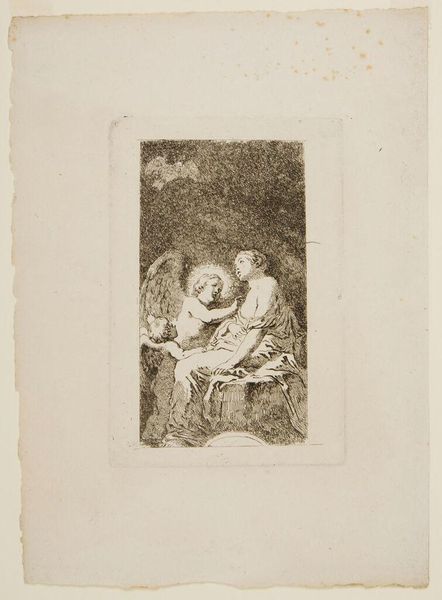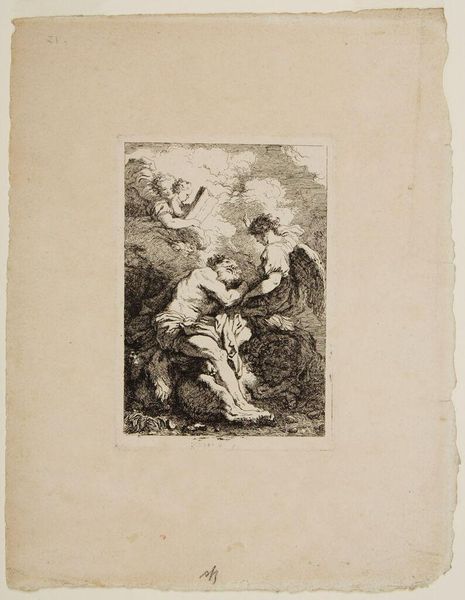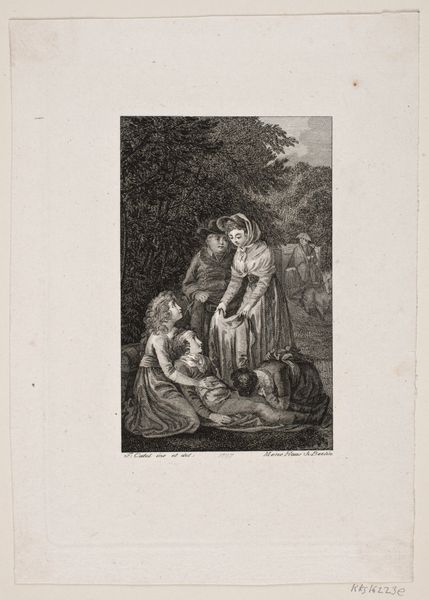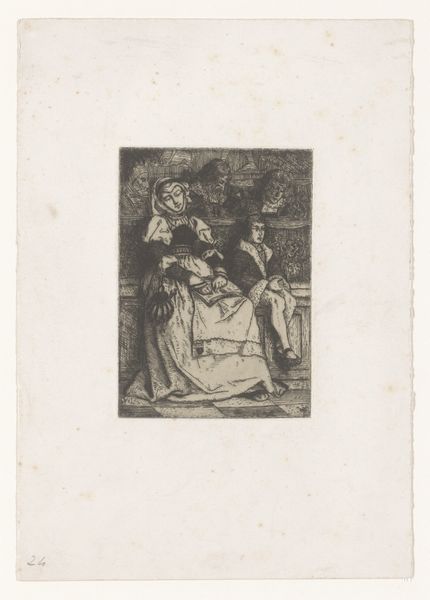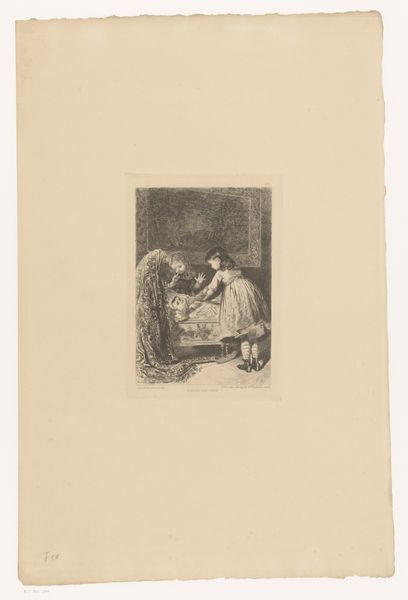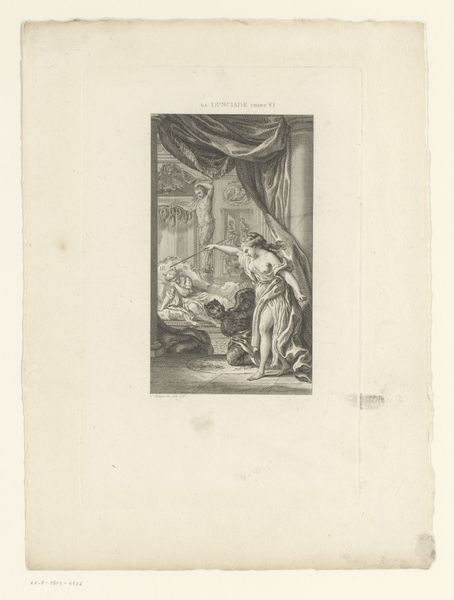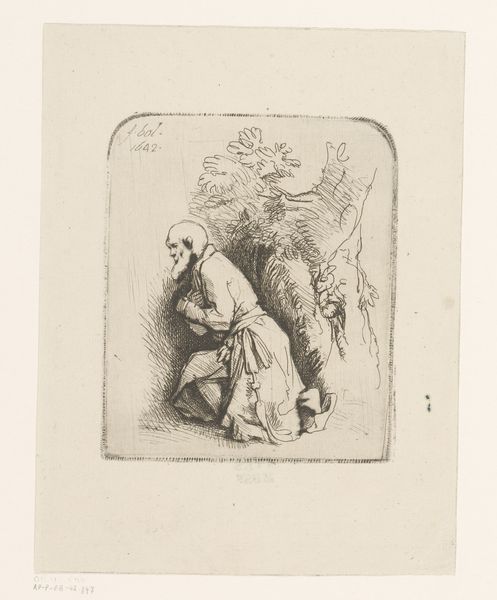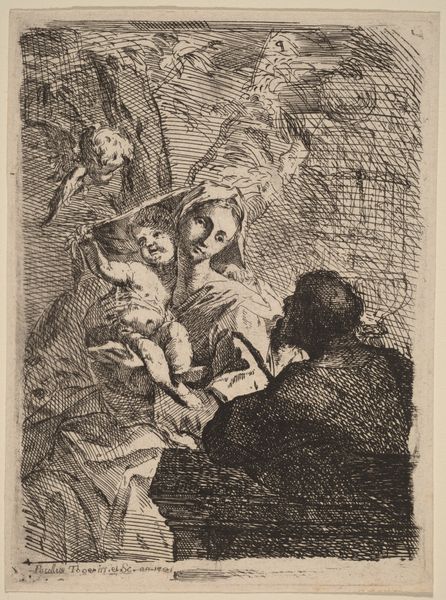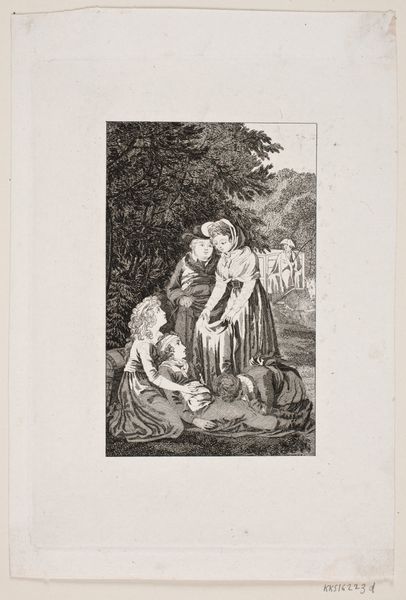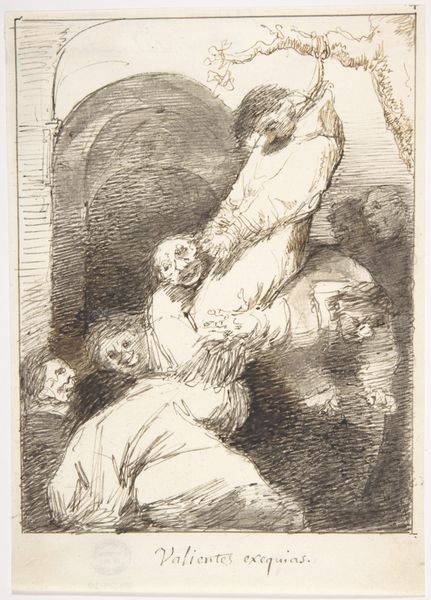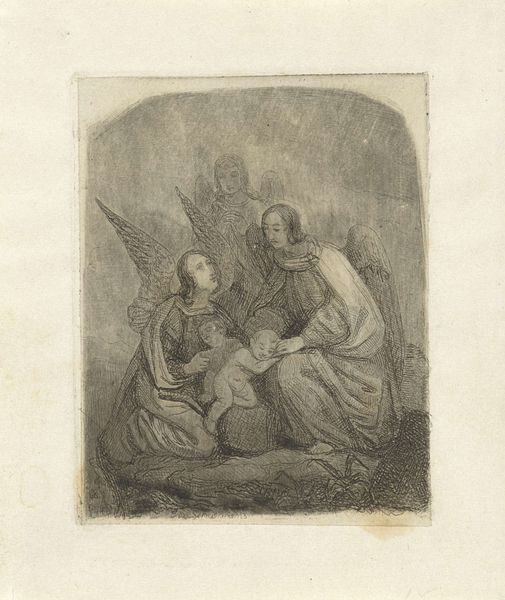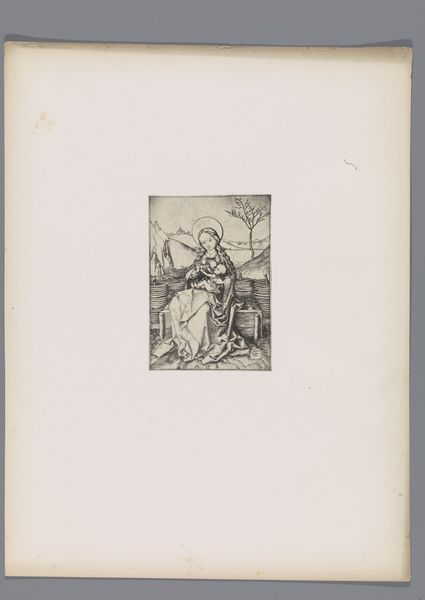
drawing, print
#
pencil drawn
#
drawing
#
amateur sketch
#
toned paper
#
light pencil work
# print
#
pencil sketch
#
incomplete sketchy
#
bird
#
charcoal drawing
#
ink drawing experimentation
#
watercolour illustration
#
watercolor
#
angel
Dimensions: Sheet: 8 7/16 x 5 7/8 in. (21.5 x 15 cm) Plate: 5 11/16 × 3 3/4 in. (14.5 × 9.6 cm) Image: 5 3/8 x 2 3/4 in. (13.7 x 7 cm)
Copyright: Public Domain
Editor: We are looking at "Saint Catherine of Alexandria," made by Jean-Honoré Fragonard between 1759 and 1769. It is a drawing, print, or watercolor piece. What strikes me most is the sketchy, almost unfinished quality. What's your take on it? Curator: Immediately, my focus is drawn to the labor behind this print. The “incomplete sketchy” nature points to process: experimentation, proofing, and the valuing of the artist’s hand, rather than a perfectly rendered, idealized form that divorces the maker from the object. Fragonard gives us insight into the studio. Considering Fragonard's workshop, can we ask if such prints were intended as models for larger paintings? Or even to be sold as artworks in their own right to a growing bourgeois market interested in accessible art? Editor: That’s a fascinating way to consider it, thinking about his studio practice and the potential consumer base. I had only considered it in terms of its aesthetic value! What does the print medium itself contribute to the overall effect? Curator: Printmaking democratized images, facilitating wider distribution and consumption, not just of religious imagery, but increasingly, secular subjects. The materials--the paper, inks, and plates--the very means of production became central to understanding its cultural impact, breaking down the walls between high and low art. We move past admiring only "high art," focusing instead on how images and the culture surrounding its manufacture affected daily lives in 18th century France. Editor: So, seeing it this way really changes how we think about art history. It makes you realize the means are equally important as the message itself. Curator: Precisely! Recognizing the work, the networks, and the material conditions that allow artworks to circulate and be exchanged helps move past seeing Fragonard only as genius but as a laborer working within a complex market of production and consumption.
Comments
No comments
Be the first to comment and join the conversation on the ultimate creative platform.
